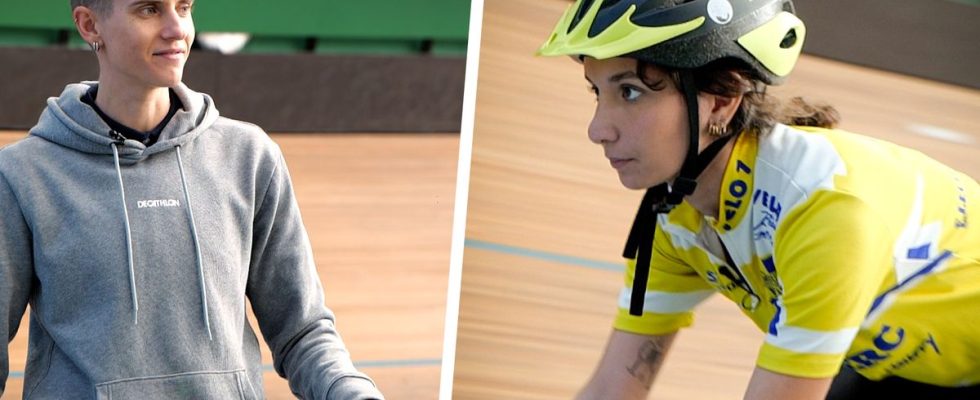Arriving at the INSEP (National Institute of Sport, Expertise and Performance) velodrome, the slope is steep. The turns seem tight. On the wood of the track, black traces are visible. One wonders if serious falls have occurred here. We will learn later that we must be careful of the splinters which are embedded all over the track. Hearts up, you now have to go down through the underground labyrinth. On the other side, we find Marie Patouillet, an athlete qualified for the Paralympic track cycling games. Already a road cycling world champion, she also shone at the Tokyo Olympics thanks to a beautiful bronze medal in 2021 and does not intend to stop there.
Neither do we because it’s time to get on Marie Patouillet’s bike that she lends us for the occasion. But first surprise, there are no brakes on this model, “a fixed gear”. “When you start pedaling, you must never stop. If I stop pedaling, the wheel stops too […] If I’m driving and suddenly stop, I might make a sun.” Cool, we just understood why no one in the editorial team was enthusiastic about the idea of testing track cycling.
Helmet on the head, yellow jersey (already!) on the body, we will try to overcome these fears thanks to the precious advice of Marie Patouillet, in particular that of “looking straight ahead” for balance. Confidence is gained over the course of the laps and we try to advance in height. The “azure” line first, the black and finally the red. From there to adding other runners on the track, we may not be at the level. Because in track cycling, everything is a question of safety. “If you don’t make an effort, you’ll never be in the sprinters’ lane.” And in the bends “to avoid slipping and stay safe up there”, a minimum speed must be respected of around 30 km/h. Luckily, our meter didn’t show that much yet.

